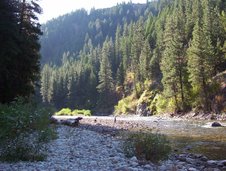I need to digress. Call it a bamboo tangent, or perhaps a bambo cosyne, I don’t know what the hell it is, but I've got issues and they involve bamboo.
There’s a shitload of bamboo out there. I mean that. I once filled the back of my full-size chevy truck with cow manure. I know precisely what a shitload is. And there is a shitload of bamboo out there. There are so many species, subspecies, and cultivars of bamboo that I can’t even get an accurate number of just how many there are. The American Bamboo Society lists 420 that are available in the US and Canada. Here’s a little groundtruth, the US and Canada don’t know dick about bamboo. Somebody has written a Wikipedia entry which claims there are 91 genera and over 1,000 species. There are still parts of China, Nepal, Tibet, Bhutan and other nearby nations where cell phones, satellite TV and the communist government haven’t reached. You won’t convince me that there aren’t even more species of bamboo out there.
So there’s a shitload of different kinds of bamboo out there.
There’s also a shitload of rodmakers. In the last decade or so rodmaking in the U.S. has gone from a relative handful of dudes to 1,000’s. There are even more rodmakers than there are species of bamboo. And we’ve already established there is a shitload of bamboo out there.
All those rodmakers agree on one thing, and probably only one thing. They won’t agree on the best way to split a culm, the best plane (or even the best steel from which to make plane irons), the best finishing method (or finish), whether heat-treating tempers or merely dries the bamboo and son. I can tell you they sure as hell won’t agree on the best music to listen to while working on a rod. But they will agree on one thing, an important thing, one might say the MOST important thing.
They will agree that Arundinaria Amabilis is the only bamboo from which to build a fine cane rod. Read Garrison/Carmichael, Mauer & Elser, Cattanach, Gould, Kreider, anyone you dam well please, and they’ll tell you to build your rod from Arundinaria Amabilis. This piece of wisdom is so well-established that the novice rodmaker assumes it must be the result of extensive testing, years of hard won experience by hundreds of rodmakers who came before us, who experimented, tried different materials, compared the results and ended up at this one, single, universal truth among rodmakers: that only Arundinaria Amabilis will do for your bamboo rod.
When you receive your bamboo from one of the handful of US sources from which it is available, it feels right. The Tonkin Cane or Teastick Cane (two common names for Arundinaria Amabilis) is thick-walled, sturdy, but flexible. When you heft the culm you think “Yes, this is the material that will make me a fine rod.” And you are satisfied that this is so because it feels right, and because everyone you ask will tell you so.
Here’s the dirty little secret of bamboo rodmaking. With the exception of a handful of individual, one-off, totally non-scientific experiments, rodmakers over the decades have engaged in that extensive testing and comparison of exactly TWO of those thousand-plus species of bamboo. And from those extensive tests on TWO species of bamboo they have declared that only the Tonkin cane is suitable for the making of bamboo rods.
In fairness, I must admit that the vast majority of those thousand-plus species are clearly and unquestionably unsuited for the making of split-cane fly rods. Their walls are too thin, or too flexible, or too brittle, or what have you. But even if you assume this is true for 80% of the known species, you have still over 200 species of bamboo to test.
It takes me about 60 hours to build a bamboo fly rod. I don’t have much spare time. The result is that in approximately 6 years I have built 2-1/2 fly rods. I’m not going to experiment with different bamboos. Doing so would take the rest of my life.
This bothers me. I don't know why. Like I said, I have issues, and they involve bamboo.



